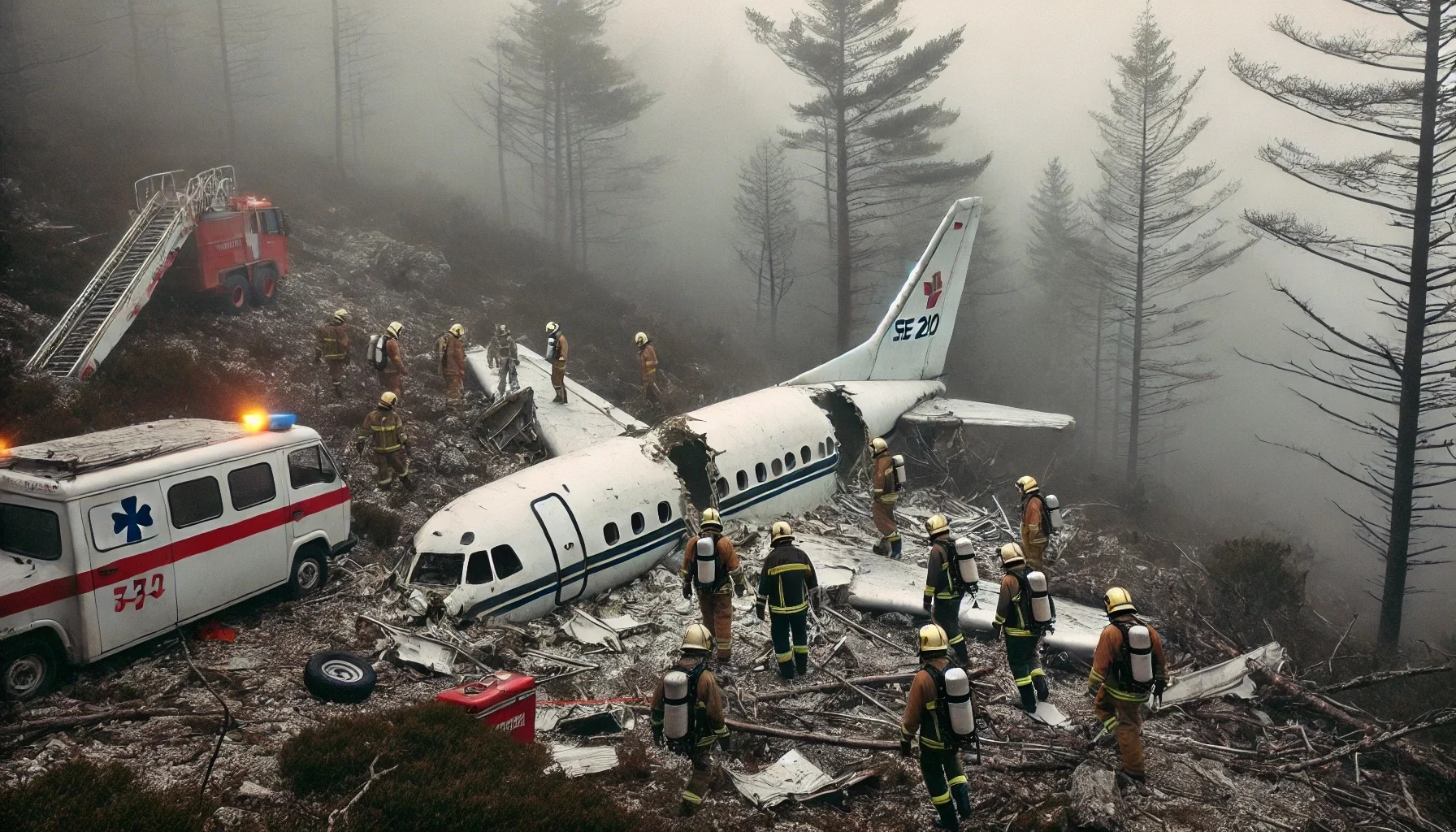
The Aviaco Flight 118 Crash
by: The Calamity Calendar Team
August 13, 1973
The Fateful Flight
On a foggy morning in August 1973, the bustling Madrid-Barajas Airport saw Aviaco Flight 118 prepare for takeoff. The flight, operated by a Sud Aviation SE 210 Caravelle 10R, was bound for A Coruña, a scenic coastal city in northwest Spain. The Caravelle, registered as EC-BIC, was a sleek French-built jetliner, known for its reliability on short to medium-haul routes. It carried 79 passengers and 6 crew members, all anticipating a routine journey.
As the aircraft climbed into the sky, the mood among the passengers was buoyant. Many were locals returning home, while others were visitors eager to experience A Coruña's charm. For the crew, led by experienced pilots, it was another day at work navigating Spain's domestic air network.
Navigating Treacherous Skies
As Flight 118 neared its destination, the weather took a treacherous turn. A Coruña Airport was notorious for its challenging weather, often cloaked in dense fog and unpredictable conditions. The pilots, trained for such scenarios, prepared for an Instrument Landing System (ILS) approach to Runway 21.
However, the dense fog blanketing the region made visual contact with the runway impossible. Communication with air traffic control (ATC) provided guidance, but the crew struggled with visibility. They aborted the initial landing attempt, circling around to try again. The situation was tense as they navigated the low-visibility conditions over the rugged Galician terrain.
The Crash
Tragically, during the second approach, the aircraft's fate was sealed. At approximately 10:00 AM, the Caravelle struck a hill near Montrove, a quiet neighborhood in Oleiros, just 2.5 kilometers from the airport. The impact was catastrophic, instantly claiming the lives of all 85 on board. The wreckage scattered across the hillside, marking one of Spain's deadliest aviation disasters at the time.
Aftermath and Investigation
The news of the crash sent shockwaves through Spain. Families awaited loved ones who would never arrive, and the nation mourned the loss of 85 souls. Emergency services quickly mobilized, but the dense fog and challenging terrain complicated rescue efforts.
Thanks for subscribing!
Investigators soon arrived at the scene, tasked with uncovering the cause of the tragedy. The investigation concluded that the primary factor was the crew's inability to accurately judge the aircraft's altitude and position due to poor visibility and inadequate approach procedures. The fog, a known hazard in the region, had obscured the pilots' view, contributing to their misjudgment.
Legacy and Lessons Learned
In the wake of the crash, Spanish aviation authorities faced tough questions about safety protocols and navigation aids. The tragedy underscored the need for enhanced pilot training in handling difficult approaches and the importance of improved technology to guide aircraft safely through adverse weather.
The lessons from Aviaco Flight 118 led to a reevaluation of approach procedures at airports prone to fog and low visibility. Authorities implemented changes to ensure that pilots had the tools and training necessary to navigate safely in challenging conditions.
A Tribute to Those Lost
The story of Aviaco Flight 118 remains a poignant reminder of the risks inherent in aviation and the importance of vigilance and preparedness. While technological advances and improved safety standards have made flying safer in the decades since the crash, the memory of that foggy morning in 1973 endures.
As the years pass, the legacy of Flight 118 lives on in the hearts of those who lost loved ones and in the aviation industry's continued efforts to learn from the past. The tragedy serves as a solemn reminder of the human cost of air travel and the ongoing quest for safety and progress in the skies.
Stay in the Loop!
Become a Calamity Insider and get exclusive Calamity Calendar updates delivered straight to your inbox.
Thanks! You're now subscribed.